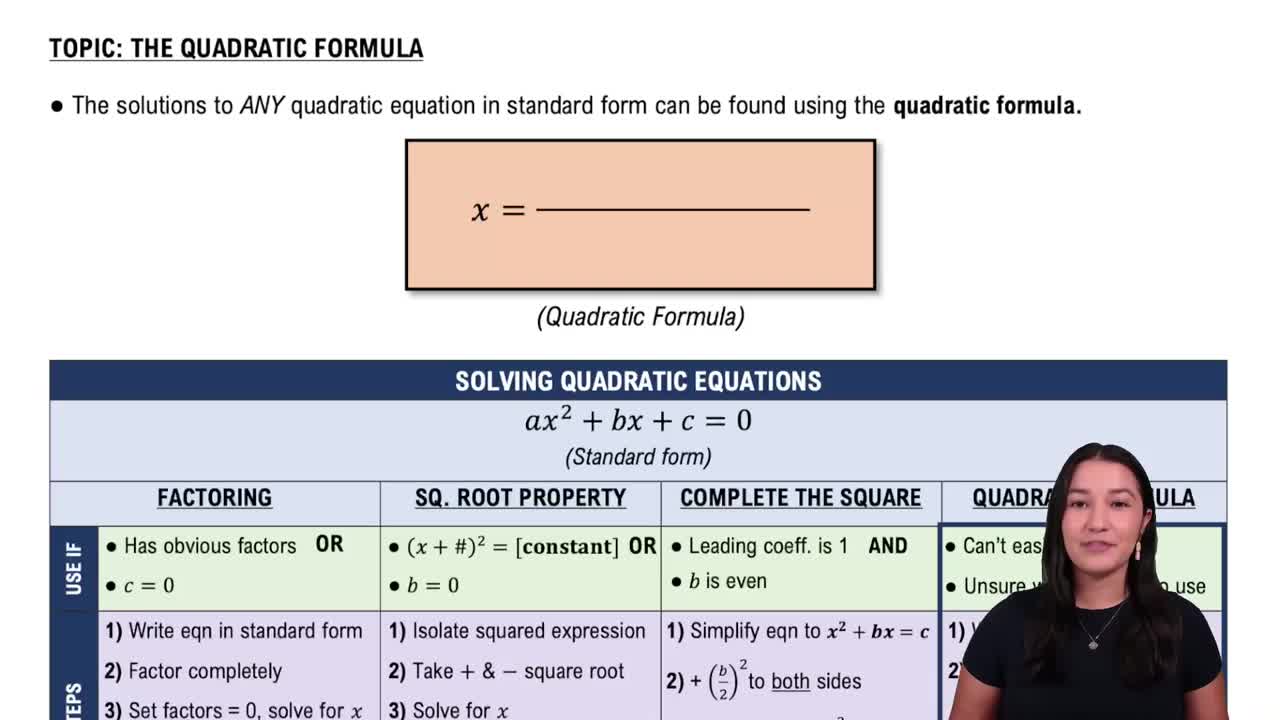Here are the essential concepts you must grasp in order to answer the question correctly.
Graph Transformations
Graph transformations involve shifting, reflecting, stretching, or compressing the graph of a function. For example, adding or subtracting a constant from a function's output shifts the graph vertically, while adding or subtracting from the input shifts it horizontally. Understanding these transformations is crucial for analyzing how the graph of y = x^2 - 4 is derived from y = x^2.
Recommended video:
Quadratic Functions
A quadratic function is a polynomial function of degree two, typically expressed in the form y = ax^2 + bx + c. The graph of a quadratic function is a parabola, which opens upwards if a > 0 and downwards if a < 0. In this case, y = x^2 - 4 represents a parabola that has been vertically shifted downwards by 4 units from the standard parabola y = x^2.
Recommended video:
Solving Quadratic Equations Using The Quadratic Formula
Absolute Value Functions
An absolute value function, such as y = |x - 1|, outputs the non-negative value of its input, effectively reflecting any negative values across the x-axis. This function creates a V-shaped graph, which is essential to understand when analyzing intersections or relationships with other functions, such as the quadratic function in this problem.
Recommended video:
 Verified step by step guidance
Verified step by step guidance Verified Solution
Verified Solution



 5:57m
5:57m